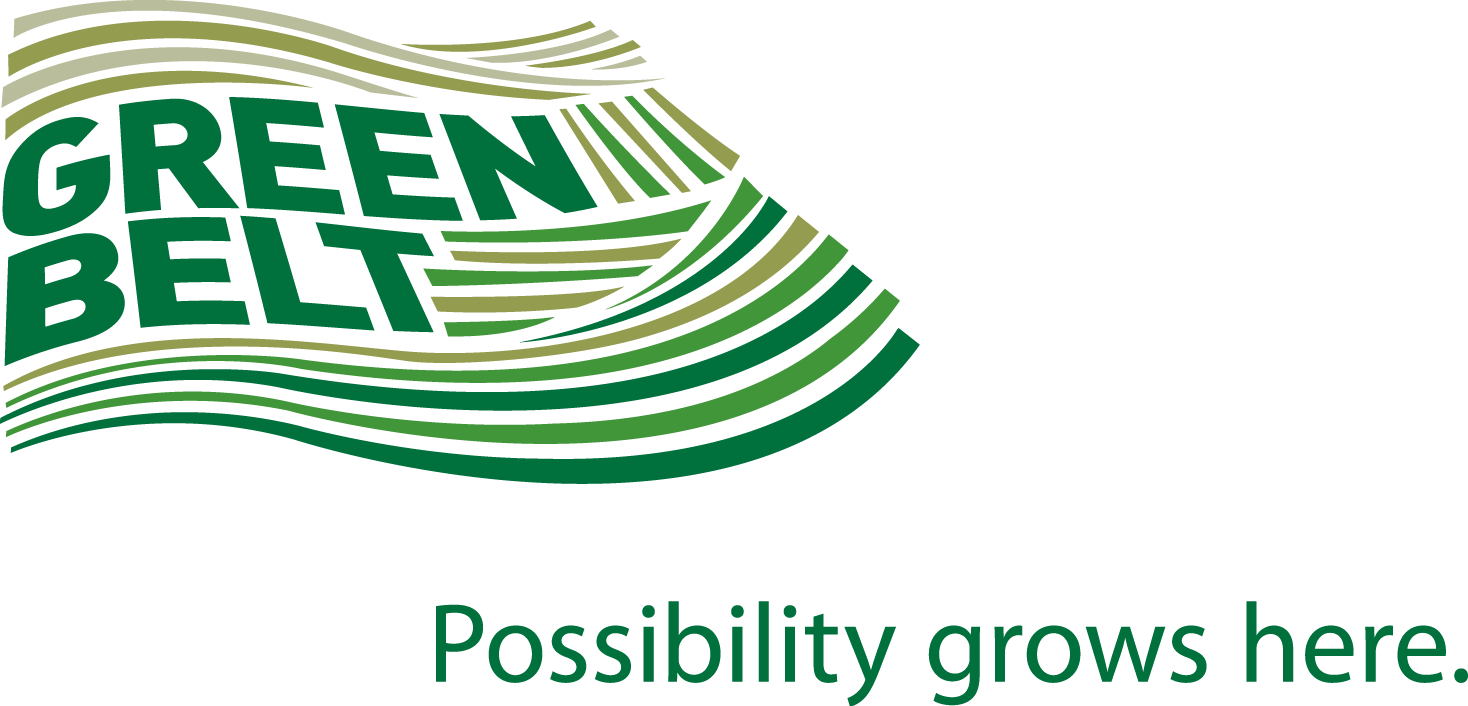Living Cities Canada
Pour consulter cette page en français, cliquez ici.
Our Living Cities Canada program is advancing green infrastructure in cities, towns, and Indigenous communities across the country. We envision communities from coast to coast where green infrastructure—wetlands and woodlands, tree-lined streets, parks, bioswales, rain gardens, green roofs and permeable pavements—is equitable, abundant, and thriving:
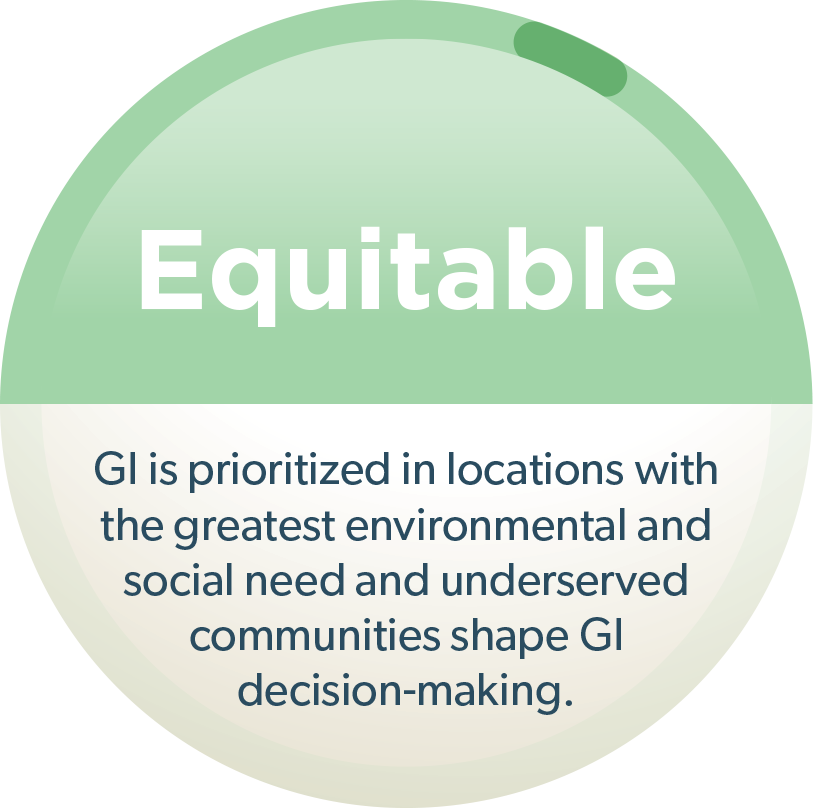
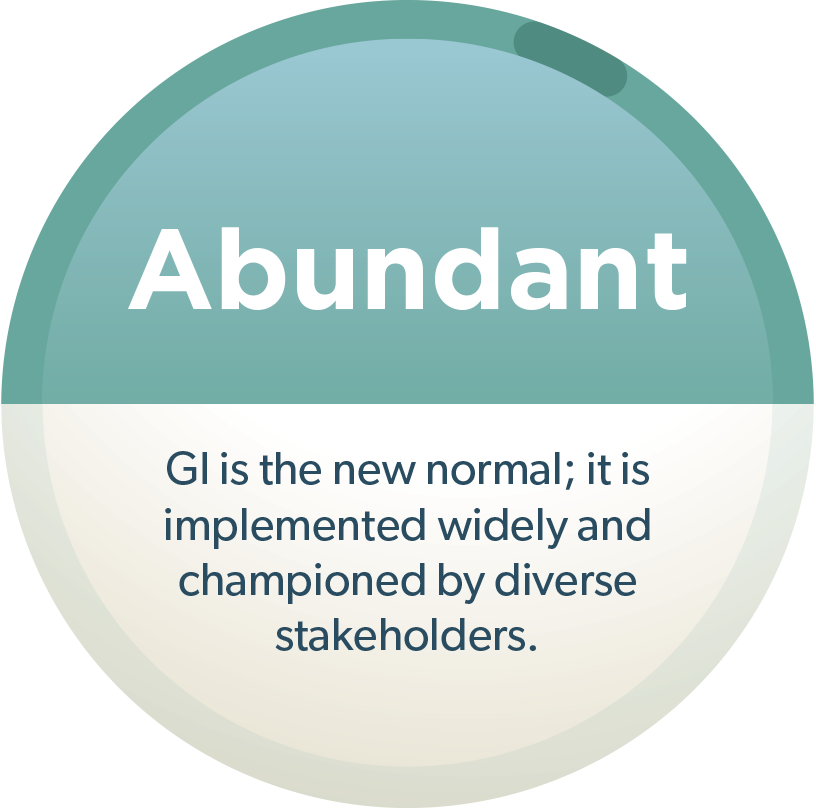
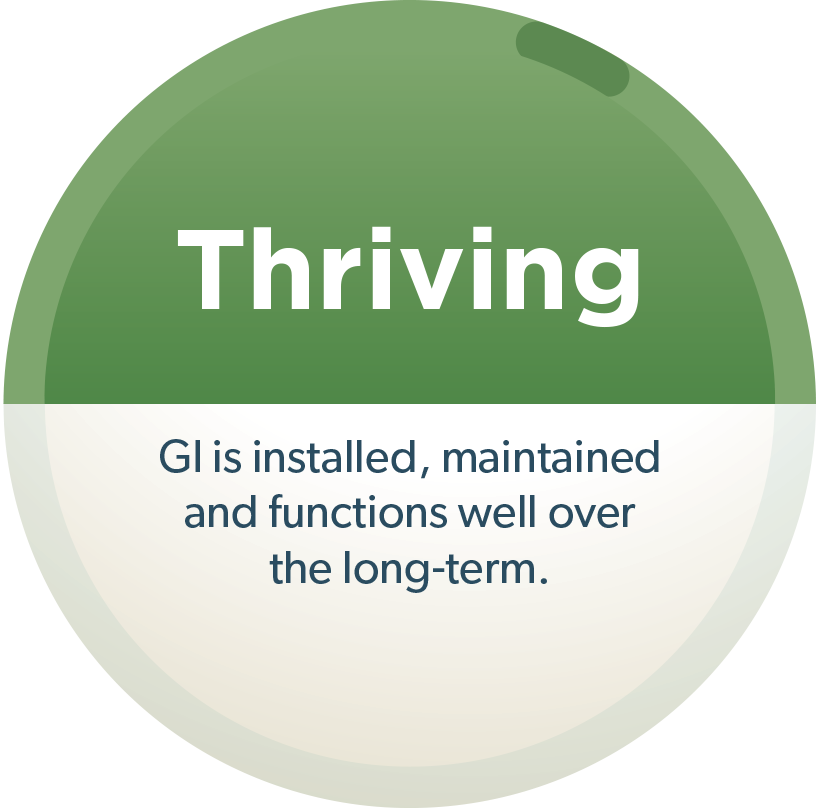
Living Cities Canada is accelerating change:
- Supporting communities to advance policies, programs, and partnerships that enable green infrastructure to be systematically integrated into core planning documents;
- Advancing equitable distribution of green infrastructure in under-natured areas;
- Reducing siloed efforts by fostering collaboration across organizations and departments
- Increasing public awareness, support, and capacity for community-led green infrastructure action projects.
Learn more about how we’re advancing supportive green infrastructure policy and community-led action:
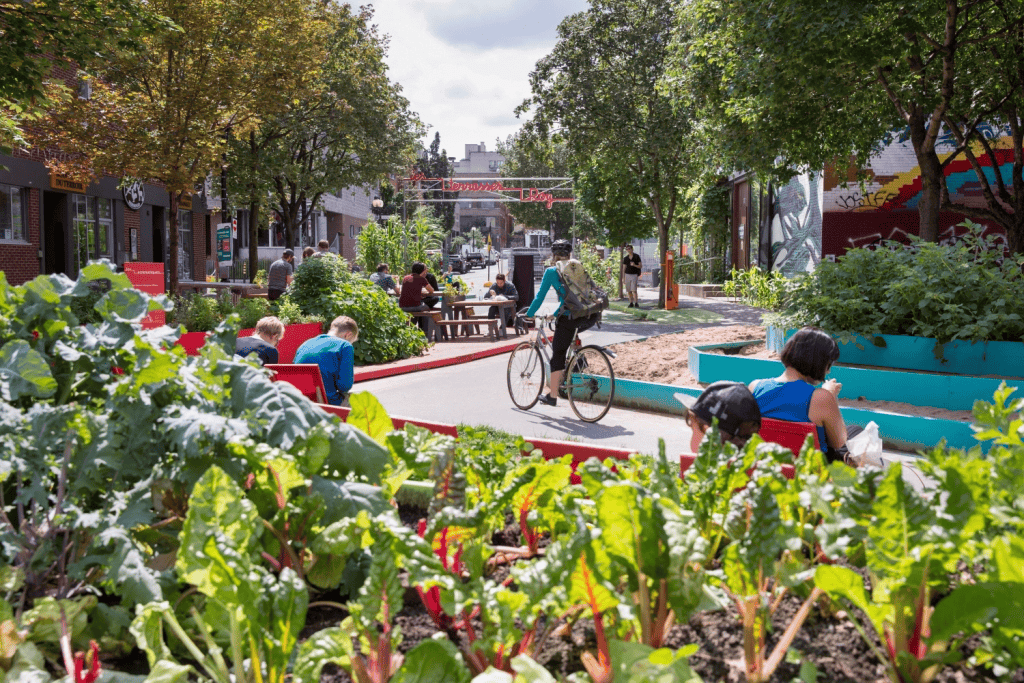
Leading Living Cities Training Program
This training program supports municipalities, ENGOs, and Indigenous communities to develop local policy pathways that advance green infrastructure using GCC’s Living Cities Policy Framework and online training program.
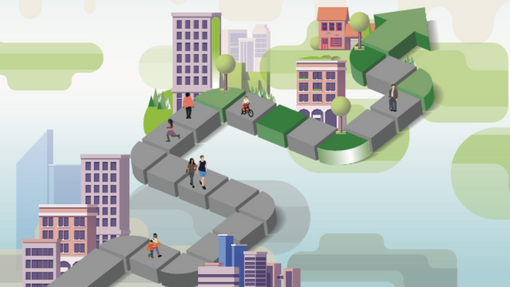
Living Cities Policy Framework
A resource to help green infrastructure practitioners learn what has worked in other communities, and what they can do to successfully advance green infrastructure.

The Living Cities Canada Fund
Our Living Cities Canada Fund is supporting local organizations to engage members of their community to advocate for and implement green infrastructure.
Interested in how we can support you to scale up equitable, abundant and thriving Green Infrastructure?
Engage with Our Green Infrastructure Projects. Find an event near you.
Why Green Infrastructure
Green infrastructure helps make urban areas work more like natural systems. When we develop cities, we replace natural vegetation and soils with hardened surfaces, like buildings, roads, and parking lots. This interrupts the natural functions the land used to provide—such as absorbing and purifying stormwater, filtering the air, providing habitat to animals and pollinators, regulating temperature, and more. Losing these natural functions makes our cities more vulnerable to the impacts of climate change, like flooding and extreme heat. It also makes our cities less sustainable, healthy, and joyous places to live.
‘Green infrastructure’ includes natural assets that are both naturally-occurring and introduced (e.g. wetlands, forests, parks, and soils), as well as enhanced and engineered assets that use natural materials and processes (e.g. rain gardens, street trees, green roofs, permeable pavements) to provide a number of services.
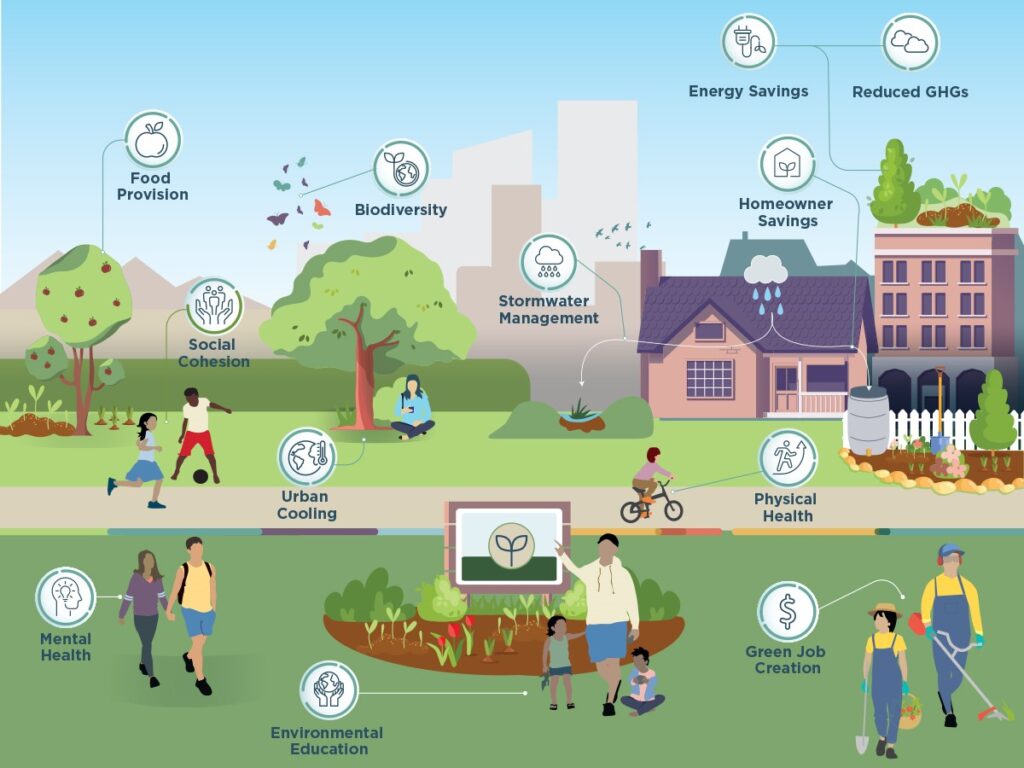
Talking about natural systems and nature-inspired processes as “green infrastructure” helps highlight how it offers critical services to our human communities.
In some cases, green infrastructure can be used as an alternative to grey infrastructure—like stormwater sewers and pipes systems that outlet to water bodies or treatment plants. In almost all cases, it can be used as a complement to grey infrastructure, helping to prolong the life of expensive municipal works. Unlike grey infrastructure that is constructed with a single purpose, green infrastructure always offers several benefits at the same time. The image above shows some of the environmental, economic and social benefits that different kind of green infrastructure can provide.



